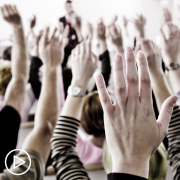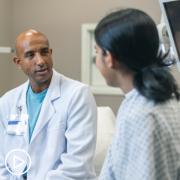Tag Archive for: lung cancer research
Expert Advice for Patients With Small Cell Lung Cancer
Expert Advice for Patients With Small Cell Lung Cancer from Patient Empowerment Network on Vimeo.
Dr. Triparna Sen, a leading small cell lung cancer (SCLC) researcher and expert, shares key advice for patients. Dr. Sen stresses the importance of working closely with your doctor, asking about clinical trials options, and the benefits of support groups.
Dr. Triparna Sen is an associate professor in the department of oncological sciences and co-director of the Lung Cancer PDX Platform at the Icahn School of Medicine at Mount Sinai in New York. Learn more about Dr. Sen.
See More from Thrive Small Cell Lung Cancer
Related Resources:

|
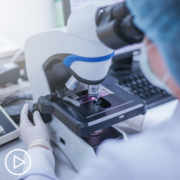
Advances in Small Cell Lung Cancer Research | Hope for the Future |
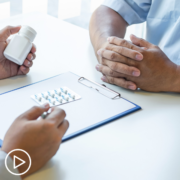
|
Transcript:
Katherine:
What three key pieces of advice would you have for a patient who has just been diagnosed with small cell lung cancer?
Dr. Sen:
First of all, I would like to say definitely, definitely work with your physician. They are trying to do their best for you. Work with your physician. Follow the treatment regimen that they give. Ask about clinical trials that you are eligible for and that you can enroll into. Then, of course, having a support group. So, there are many patient advocacy groups right now for non-small cell and small cell lung cancer.
I think being a part of such a patient advocacy group where you have people going through the same journey, I think, it really helps. It helps you sort of manage your disease better. It helps you stay hopeful when you hear about other people’s sort of prognosis and if they have durable benefits from drugs. So, I think having a support group is very important. If there is an ability for you to contribute to research in terms of giving blood or tissues, if your physician is saying that you could be eligible for that, I think a contribution to research is really key.
Because looking at the disease mechanisms in the clinical tissue is sort of where for us it is absolutely golden. We go there. We look at the disease mechanisms and tissues. If there is an opportunity for you, then I think it should definitely be explored.
Finally, I would like to say we are really trying as researchers to really understand the disease better. We’re trying to do that better. I hope and I pray that we go faster with it. But I think there is hope right now for patients with small cell lung cancer. The research is really progressing better. There are many clinical trials.
So, I think stay hopeful and have a peer support group who can take you through this quite difficult journey.
Katherine:
Why should patients consider consulting with a lung cancer specialist?
Dr. Sen:
I think it’s crucial because these lung cancer specialists really know the current state of the art treatments. They are thought leaders. They participate in trials. They actually sit on advisory boards with companies.
They are strategizing the entire treatment landscape for this disease. So, if you go to a lung cancer specialist, you’re more likely to get the most updated knowledge about what treatments are out there, what you qualify for, what are the clinical trials out there, and what are working in patients. This is not just for small cell. There are many, many trials that are happening in non-small cell also. So, whatever your diagnosis is, a specialist should be able to tell you what your options are. You really want to know about your options. Your options about biomarker testing.
Your options about screening. Your options about trials. I think a lung cancer specialist can really guide you towards that.
Katherine:
Dr. Sen, thank you so much for joining us today. It’s been a pleasure speaking with you.
Dr. Sen:
Thank you.
Advances in Small Cell Lung Cancer Research | Hope for the Future
Advances in Small Cell Lung Cancer Research | Hope for the Future from Patient Empowerment Network on Vimeo.
What new treatments are being studied for small cell lung cancer (SCLC)? Dr. Triparna Sen, a leading researcher in the field, shares promising updates, including advances being made with LSD1 inhibitors, DDR (DNA Damage Response) inhibitors, and DLL-3 targeted therapies.
Dr. Triparna Sen is an associate professor in the department of oncological sciences and co-director of the Lung Cancer PDX Platform at the Icahn School of Medicine at Mount Sinai in New York. Learn more about Dr. Sen.
See More from Thrive Small Cell Lung Cancer
Related Resources:

|

|

|
Transcript:
Katherine:
Dr. Sen, you are a leading researcher in the field. What is the latest research news that you can share with us about small cell lung cancer?
Dr. Sen:
There’s a lot of great research going on in my lab and labs all across the world. I think for the first time in a very long time, we are really trying to dissect the biology of small cell.
It has been a research in making for many years. I think we have now really come to a point where we are really trying to understand the disease. I’ll go into a little more about the questions you are trying to answer. So, one of the main questions or one of the main things that kind of is a hurdle to getting durable treatment options is that the frontline chemotherapy and immunotherapy doesn’t work as well as they should even for the approved regimens, which is the chemotherapy and the immunotherapy.
The patients often do not have durable benefits. Even if patients have durable benefits, it’s only in a very minority of patient population which means in only about 10 to 15 percent of the total patient population actually do have any benefit from the frontline treatment. So, the main question that we are trying to answer is that why do these patients not respond to immunotherapy and chemotherapy in the frontline.
What are the mechanisms of resistance to chemotherapy and immunotherapy? Primary resistance, what I mean by primary resistance is that patients who never respond. The disease comes back even while they’re getting the frontline chemo. So, the primary resistance, the mechanisms. Of course, when they have acquired resistance after the maintenance regimen when they come back, why are these patients having this acquired resistance to chemotherapy and immunotherapy? Because only when we understand resistance mechanisms will we be able to then come to the combination strategies.
That’s the next area of research is that once we understand the mechanism of chemotherapy and immunotherapy resistance is then coming up with effective combination therapy. So, what should we combine with immunotherapy in order to make immunotherapy better? I’ll give you an example from the research that we did.
So, our lab focus is, as I said, on making immunotherapy better. What we understood is that there are certain epigenetic modifiers like LSD1.
Repressing these, repressing LSD1, with a small molecule inhibitor actually augments or benefits the response to immunotherapy. So now, we are looking at LSD1 inhibitors in combination with immunotherapy. That’s one area that we are focusing on. The second are that we published extensively on is DNA damage response inhibitors which really works in combination with immunotherapy and makes immunotherapy response better.
Now, we are investigating that in the lab the combination strategies of combining these DNA damage response inhibitors with immunotherapy. So, combination strategies. I think always coming up with novel targets. I will mention there are many novel targets that are right now in the clinical trials actually showing really, really encouraging data.
I’m talking about DLL3 targeted BiTEs or ADCs we have seen that are showing preliminary data. We have seen a really good really good response in patients. So, finding these targets that are very specific for small cell and that can work in these unique population of patients.
So, DLL3 targeted agents. There are agents that target B7-H3. So, we are looking at these novel targets and where they could fit in the current therapeutic regimen. Finally, since small cell lung cancer is not a surgical disease, we have to look for other options to find biomarkers. So, liquid biopsy. Liquid biopsy, what I mean by that is understanding the disease not just from tissue but also from blood.
There’s a lot of research that’s happening in understanding the biology of small cell from blood draws from these patients.
So, the field of using liquid biopsy or understanding the disease from blood draws is one of the areas that many labs, including ours, are focusing on, and how we can utilize these blood samples to then monitor the disease and also understand the resistance mechanisms to various drugs. I think these are the areas that we are investigating and seems, to me, very important areas that we need to address in order to really manage small cell lung cancer.
Katherine:
What do these advances mean for small cell lung cancer patients? Are you hopeful?
Dr. Sen:
Oh, yes. Of course. We’re always hopeful. That’s the goal, right. The goal is to have effective therapies that work and that works for a long time. That also benefits the patients in terms of quality of life which means without very severe adverse effects.
So, very hopeful. Because I think what was limiting us for all those years for the last 40 to 50 years is that we really did not understand the complexity of small cell lung cancer. It is a very complex disease. It is very different from non-small cell lung cancer which has these mutations that you can target drugs against. So, there are this EGFR mutations and KRAS mutations in non-small cell.
But small cell, it’s not that. It is not a disease where we have these GATA function mutations that we can devise therapies against. It’s a very different disease. The disease is aggressive. The disease progresses fast, and it also changes its physiology very fast. So, I think for the first time, we really are trying to understand the biology. What that helps is then to come with very informed decisions about therapy.
So, yeah, I’m very hopeful. Because I think we have now targets that we are actually seeing benefits in patients. I think the more and more we understand resistance mechanisms, we’ll also be able to manage that better.
Katherine:
That’s very promising news.
Understanding Small Cell Lung Cancer Treatment Options
Understanding Small Cell Lung Cancer Treatment Options from Patient Empowerment Network on Vimeo.
How is small cell lung cancer (SCLC) treated? Dr. Triparna Sen discusses treatment options for patients with small cell lung cancer, both first-line and second-line therapies, and the important role of clinical trials in patient care.
Dr. Triparna Sen is an associate professor in the department of oncological sciences and co-director of the Lung Cancer PDX Platform at the Icahn School of Medicine at Mount Sinai in New York. Learn more about Dr. Sen.
See More from Thrive Small Cell Lung Cancer
Related Resources:

|

|

Advances in Small Cell Lung Cancer Research | Hope for the Future |
Transcript:
Katherine:
How do test results impact care?
Dr. Sen:
So, you know, once the doctor has confirmed the small cell lung cancer and we have confirmed what stage it is at – what I mean by staging is that it could be either a limited stage disease which is an early stage small cell, or it could be an extensive stage of small cell. The treatment for those two are quite different. So, if it is an early stage or limited stage, patients are usually treated with chemoradiation. If it is an extensive stage or a metastatic small cell, then patients are usually given a standard of care which is chemotherapy in culmination with immunotherapy which is an antibody against PD-L1.
Katherine:
You’re talking about treatment options that are currently available for small cell lung cancer. What about targeted therapies?
Dr. Sen:
There aren’t very many therapeutic strategies that are targeted therapies as we speak like we hear from non-small cell lung cancer.
So currently, like I mentioned, the frontline treatment for small cell lung cancer is with chemotherapy and immunotherapy and maintenance with immunotherapy alone.
Once the patient relapses, which often is the case – all patients actually have resistance to the frontline chemo-io (chemoimmunotherapy) at some point in time. Once they have a relapse disease, the second line of therapy until now is with either topotecan or irinotecan which are two topoisomerase inhibitors or with lurbinectedin which is in the second line.
So, when it comes to targeted therapies, so far we a have seen, you know, the conventional way that we think about EGFR inhibitors or KRAS inhibitors, it hasn’t been the case so far with small cell lung cancer. It’s very limited in the current approved setting. But there are many clinical trials that are investigating several targeted therapies that are either targeting – I can speak about that more as I talk about research strategy. But there are many targeted agents that are targeting surface targets like DLL3, B7-H3, or SEZ6. There are other targets that are targeting things like DNA damage repair, proteins, or epigenetic regulators like LSD1. But so far in the approved setting, it is quite limited.
Katherine:
When we look at what therapies are available, what treatment options are available, what are some typical side effects? How are they managed?
Dr. Sen:
Some of the major side effects that you see, especially with a frontline chemo-io (chemoimmunotherapy), are very common like you see with other cancer types. Also, it’s usually myelosuppression.
I think it is prevented or is managed either by dose reduction or treatment delays or treated with transfusion. There has been research that CDK4/6 inhibitors, trilaciclib, when treated with in combination with chemotherapy can bring down the side effects that we see with chemotherapy.
Some of the immunotherapy related adverse events includes pneumonitis, colitis. They are usually treated with early steroids, treatment withholding, and also it could be leading to permanent discontinuation of the treatment if the adverse events are really severe. Those are mainly what we see we the chemo-io (chemoimmunotherapy) regimen that is given up front.
Katherine:
Okay. What questions should someone be asking about their proposed treatment plan?
Dr. Sen:
Right. So, I think, of course, first is what stage. The treatment will depend upon the stage of small cell. Usually, on the frontline, everyone is given chemotherapy and immunotherapy.
It’s a systemic therapy that’s being given. But I think the patient should be asking questions like are there clinical trials available for me. Because there are multiple clinical trials right now in the frontline and the second line setting.
So, I think definitely the patient should ask about the clinical trials that the qualify for. In terms of contributing to research, I think if there are options for them to either sign up for blood collection protocol or for tissue collection protocol, I think the patient should definitely enroll for that.
Because that really helps our research strategy. But in terms of treatment, I think they should ask about available clinical trials that they qualify for.
Katherine:
Let’s turn to clinical trials then. Patient participation, of course, is essential to finding new and better treatments. What would you say to someone who’s hesitant to participate in a clinical trial?
Dr. Sen:
Yes. I mean, that’s often the thing. We hear about these novel drugs. They’re in trial. For a disease that’s that aggressive, I think once there is a relapse, I think clinical trials could be a very good option for patients. These are novel drugs that have come out of very robust research that we do in the lab. They can often work quite a bit. So, I think, of course, talk to your physicians. Talk to them at length about whether you do qualify for it. But if there is a trial at the center that you’re getting treated at and if the doctor advises that, I think enrolling in a clinical trial could be a very good option for patients, especially in the aggressive setting where there are not many options available for patients.
As I mentioned here, research is my true north. I mean, all my lab does is understanding the biology of small cell. It’s extremely essential that we actually try to get the knowledge of the patient tumor. So, if you have availability of contributing either in terms of tissue or blood to research, I think I would advise and encourage patients to definitely contribute to that.
Essential Small Cell Lung Cancer Testing
Essential Small Cell Lung Cancer Testing from Patient Empowerment Network on Vimeo.
What tests are essential for patients with small cell lung cancer (SCLC)? Dr. Triparna Sen defines small cell lung cancer and reviews the testing that should take place following a diagnosis.
Dr. Triparna Sen is an associate professor in the department of oncological sciences and co-director of the Lung Cancer PDX Platform at the Icahn School of Medicine at Mount Sinai in New York. Learn more about Dr. Sen.
See More from Thrive Small Cell Lung Cancer
Related Resources:

|

|

Advances in Small Cell Lung Cancer Research | Hope for the Future |
Transcript:
Dr. Sen:
I’m Dr. Triparna Sen. I’m an associate professor at the Icahn School of Medicine. I’m also the co-director of the Lung Cancer PDX program here at the Icahn School of Medicine at Mount Sinai, New York. I am the lead of a very translational research laboratory. Our goal is to find novel and effective therapeutic strategies for patients with lung cancer.
Katherine:
Thank you for that. We’re so glad to have you with us today. Would you define small cell lung cancer for our audience?
Dr. Sen:
Of course. So, one of the main research areas in my lab is to try to understand the biology of this very aggressive form of lung cancer. Having said that, as you all may be aware that lung cancer is one of the leading causes of cancer related mortality.
Lung cancer can be of two types, non-small cell and small cell. So, small cell is a very high-grade neuroendocrine tumor. And it is a very aggressive tumor.
The name is derived because the size of the cells that you see under the microscope is very small. So, it was originally called old cell carcinoma, and now it is called small cell lung cancer. What you need to remember about this disease is that it is about 15 percent of lung cancer diagnosis. It is very highly metastatic. It is often associated with a long history of smoking.
Katherine:
Okay. What testing should take place following a diagnosis of small cell lung cancer?
Dr. Sen:
The symptoms can include various things like coughing, labored breathing, or even bleeding during coughing. What happens then is the initial diagnosis actually happens through some sort of contrast enhanced CT or PET CT. Also, a confirmatory test that happens through immunohistochemistry with H&E. That is how we look at the histopathological features of the cancer. So once it is confirmed to be small cell lung cancer, then additional tests may happen through tumor biopsy where the doctor then confirms the stage of the tumor and how much the disease has spread.
So, there may be biopsies taken from the lung and from other regions of the body to determine how much the disease has spread.
What Are the Latest Lung Cancer Treatment Updates?
What Are the Latest Lung Cancer Treatment Updates? from Patient Empowerment Network on Vimeo.
With lung cancer research advances, what are the latest treatment updates? Expert Dr. Christian Rolfo from Mount Sinai explains treatment and monitoring advances and shares about lung cancer types that need more research funding.
See More from Best Lung Cancer Care
Related Resource:

|
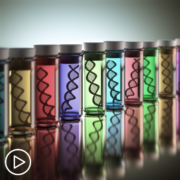
|
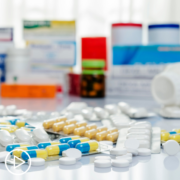
|
Transcript:
Dr. Nicole Rochester:
Are there any other exciting updates that patients and families should know about related to lung cancer, maybe things that are in the works that we may hear about in 2023?
Dr. Christian Rolfo:
Yeah, I said, for example, liquid biopsy I was mentioning liquid biopsy, and we are focused obviously, and in patients that have advanced disease or when they have this disease that is already confirmed. But we are now moving the tools that we have to the dedication of cancer using liquid biopsy from the very beginning, so we can use a minimal residual disease, that is patients after the surgery. And I think I hear answering one of the questions that we have in the chat that this minimal residual disease is the quantity of two more that sometimes we are not able to see in the images or is very tiny, and we have equivocal information, the possibility to discover the patients that after surgery, have the possibility to recurrence or have come back of the disease is really important.
And also we are looking for early detection of lung cancer trying to identify patients with the high-risk populations that they are maybe having the opportunity to be in lung cancer screening because they are smokers, or because they have all the characteristics on top of this model that we can also use the liquid biopsy there. But one of the most important messages that I want to say, because I mentioned it here smokers, and I want to remind you that we have a big proportion of patients around 20 to 25 percent of the patients that they never smoked and that they can develop lung cancer. So we have a motto, we say if you have a lung, you can have it because we want to break this stigma that lung cancer has the only patients who are smoking, obviously smoking and tobacco are related highly with lung cancer.
But also we have patients that are second-hand smokers or they have other causes of lung cancer. So we need to be aware and we need to try to get attention for that because, in this special population of non-smokers, we know that there is a special characteristic that we can treat them completely different, so it’s very important that we identify those patients as well.
Dr. Nicole Rochester:
I really appreciate you sharing that, Dr. Rolfo, because as I’m sure you know, there’s a lot of stigma associated with lung cancer and the assumption that if you have lung cancer, then that automatically means that you are a smoker. And now that we know that people who smoke, those are challenges. But to just acknowledge that not everybody with lung cancer is someone who is a smoker, and also that the approach, the treatment approach may be different, so I really appreciate you pointing that out.
Dr. Christian Rolfo:
And actually, Dr. Rochester, you know this stigma was causing several domino effects. We have less funding for research, we have less support from the community sometimes like other tumors have, for example, breast cancer. So if we are looking specifically in lung cancer, the quantity of women that are dying or are going to a diagnosis of lung cancer, it’s very impressive, but actually it’s killing more people sometimes than other tumors. So we need to be very careful with this stigma because we need…and this is a call for action, now we need more funds, we need more support from the community, because this is a very important area that will need research.
How Can I Get the Best Lung Cancer Care?
How Can I Get the Best Lung Cancer Care? from Patient Empowerment Network on Vimeo.
How can lung cancer patients access optimal care? Expert Dr. Christian Rolfo from Mount Sinai and Dr. Nicole Rochester discuss the latest lung cancer treatments and research, lung cancer testing, equitable care, and patient-centered care for the best health outcomes.
See More from Best Lung Cancer Care
Related Resource:
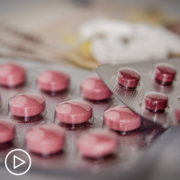
|
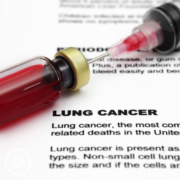
|
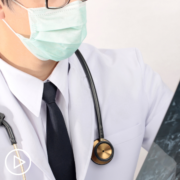
|
Transcript:
Dr. Nicole Rochester:
Hello and welcome. I’m Dr. Nicole Rochester, I’m a pediatrician, a professional health advocate, and your host for today’s Patient Empowerment Network program. We are so happy that you tuned in. How can you access the best possible lung cancer care? What do the latest combination therapies mean for you? Should you consider a clinical trial as a path to enhancing your lung cancer care? This Best Lung Cancer Care program focuses on providing actionable steps to achieving equitable care and connecting to patient-centered care on your path to empowerment. We are joined today by international lung cancer expert, Dr. Christian Rolfo, Professor of Medicine and Associate Director for Clinical Research in the Center for Thoracic Oncology at the Tisch Cancer Institute. Thank you so much for joining us today, Dr. Rolfo.
Dr. Christian Rolfo:
Thank you, Dr. Rochester, for having me. It’s a pleasure to be here.
Dr. Nicole Rochester:
Wonderful. I’m looking forward to our conversation. Now, following this program, you will receive a survey and we would be thrilled to get your feedback because this helps inform future lung cancer programs we produce. Please remember that this program is not a substitute for seeking medical care, so please be sure to connect with your healthcare team regarding the best options for your care. Now, let’s delve into this very important topic, how can I get the best lung cancer care? And, Dr. Rolfo, we’re going to start with an overview of the lung cancer treatment landscape. We know that this landscape is rapidly changing and keeping up with the pace of developments could be a challenge not only for doctors, but certainly for patients and family members, so I was hoping that you could give us an overview of the current lung cancer treatment landscape.
Dr. Christian Rolfo:
In the last year, lung cancer treatment was changing radically. We have actually, including some of their new concepts as precision medicine or personalized medicine, that we have actually different therapies that are specifically for some group of patients, that they have specific alterations in their tumors. And when I’m talking about alterations I refer to mutations, genomic alterations that can be targeted nowadays with specific medications, and currently, some of them are actually, the majority of them are actually pills, for example. So it was changing radically and we are not using it like before chemotherapy for everyone. Another area of important interest was the introduction of immunotherapy, this is also an important tool for fighting cancer, and there you have a substance that are administered generally, all of them are intravenous, and this is the principle of that is to await from your own inner system, from the patient immune system, they are the tools to fight against the cancer, so it’s a very innovative way to approach cancer, and this is.
The good thing is that these two approaches targeted therapies, immunotherapy, and also still obviously the combination with chemotherapy in some of the case with immunotherapy, we can use not only metastatic patients, so in patients who have advanced disease, but also we can use in patients who have earlier stage that they were operated, for example, and we want to prevent that this patient is not going to a further process of cancer metastases, or there are several, several innovations. Then we have innovations that are coming also from local treatments and we call local treatments the one that, for example, surgery or radiation, we have new technologies also that are arriving there, and the combination sometimes with the medical treatment or systemic treatments that are going everywhere that is the description of systemic are helping these patients to have not recurrence and improving. Actually, lung cancer survival was really improving in the last years, and we are very excited by that because, unfortunately, it’s very still an aggressive disease that we were able to change with all this armamentarium the prognosis of these patients.
Dr. Nicole Rochester:
Wow, that’s a lot. I mean it’s exciting to hear that there are so many new developments on the horizon and that so much has happened just in the last year as it relates to therapy. What have we learned about drug resistance as it relates to non-small cell lung cancer? Are there any new developments in that area?
Dr. Christian Rolfo:
Yeah, obviously the patients of the…as I just commented, we have different patients with different needs and different scenarios, so we are now fragmenting a lot of the diseases and we have actually different diseases, and one big disease that is the lung cancer, so now we are treating patients in a different way. And some patients have, for example, patients who are under treatment with targeted therapies, they can develop mechanics of resistance that we can nowadays not only identify but also treat.
So we can treat and change the recurrence of these patients. One of the tools that we are using for that is liquid biopsy, for example, that is this blood draw that we are going for the patients, and actually, we are trying to do this determination from the very beginning and also monitoring the patients after we have this information to see if we are able to determine the mechanics of resistance, see also the outcomes of some of the therapies and change the treatment when it’s necessary. In immunotherapy, we have alterations that are resistant or refractory, that is another way of definitions so refractory we say patients that are not responding during the treatment and resistance of patients that or simply patients that are after the treatment having a progression in a very short time, so we need to identify these two categories and try to treat them in different ways that we have armamentarium for that as well.
Dr. Nicole Rochester:
Wonderful, thank you for that. So you’ve mentioned a lot about updates, are there any other exciting updates that patients and families should know about related to lung cancer, maybe things that are in the works that we may hear about in 2023?
Dr. Christian Rolfo:
Yeah, I said, for example, liquid biopsy I was mentioning liquid biopsy, and we are focused obviously, and in patients that have advanced disease or when they have this disease that is already confirmed. But we are now moving the tools that we have to the dedication of cancer using liquid biopsy from the very beginning, so we can use a minimal residual disease that is patients after the surgery. And I think I hear answering one of the questions that we have in the chat that this minimal residual disease is the quantity of two more that sometimes we are not able to see in the images or is very tiny, and we have equivocal information, the possibility to discover the patients that after surgery, have the possibility to recurrence or have come back of the disease is really important.
And also we are looking for early detection of lung cancer trying to identify patients with the high-risk populations that they are maybe having the opportunity to be in lung cancer screening because they are smokers, or because they have all the characteristics on top of this model that we can also use the liquid biopsy there. But one of the most important messages that I want to say, because I mentioned it here smokers and I want to remind you that we have a big proportion of patients around 20 to 25 percent of the patients that they never smoked and that they can develop lung cancer, so we have a motto, we say if you have a lung, you can have it because we want to break this stigma that lung cancer has the only patients who are smoking, obviously, smoking and tobacco are related highly with lung cancer.
Dr. Christian Rolfo:
But also we have patients that are second-hand smokers or they have other causes of lung cancer, so we need to be aware and we need to try to get attention for that because, in this special population of non-smokers, we know that there is a special characteristic that we can treat them completely different, so it’s very important that we identify those patients as well.
Dr. Nicole Rochester:
I really appreciate you sharing that, Dr. Rolfo, because as I’m sure you know, there’s a lot of stigma associated with lung cancer and the assumption that if you have lung cancer, then that automatically means that you are a smoker, and not that we know that people who smoke, those are challenges, but to just acknowledge that not everybody with lung cancer is someone who is a smoker, and also that the approach, the treatment approach may be different, so I really appreciate you pointing that out.
Dr. Christian Rolfo:
And actually Dr. Rochester, you know this stigma was causing several domino effects. We have less funding for research, we have less support from the community sometimes like other tumors have, for example, breast cancer. So if we are looking specifically in lung cancer, the quantity of women that are dying or are going to a diagnosis of lung cancer, it’s very impressive, but actually it’s killing more people sometimes than other tumors. So we need to be very careful with this stigma because we need…and this is a call for action, now we need more funds, we need more support from the community, because this is a very important area that will need research.
Dr. Nicole Rochester:
Absolutely, so that brings me to the next section of our program, you’ve mentioned a lot of these therapies already, I just want to go a little bit deeper into exploring some of the lung cancer treatment strategies and also talk about clinical trials, so you talked about bio-markers. Can you expand a little bit on that? We know that no two lung cancers are the same. Can you explain to the audience how biomarkers help with lung cancer treatment and they can be so important?
Dr. Christian Rolfo:
Yeah, we have different…as I say, we are looking at specific characteristics from the tumor when I’m referring to genomic alterations that I’m not referring to something that you can get from your family and bring to your descendants. So I’m talking about mutations that are occurring inside the tumors and only for the tumor, and so affecting only the subject that have this patient that has this alteration. So these biomarkers are an important way to identify populations that we can treat specifically, and I would like to be a little bit more specific on that. We have some of the alterations, for example, one of the mutations that we call EGFR or epidermal growth factor receptor mutation that is supported in different populations in different frequencies.
For example, if we have patients that are with an Asiatic origin, we have there the possibility to have a…and I’m referring, for example, Chinese, Japanese, this area of the East Asia, we have a hyper-prevalence of these mutations in around 50 percent of the patients with lung cancer, non-squamous we’d say this is another characteristic of the tumor can have this specific alteration. If we are moving, for example, to Latinos, the pains of the areas of Latinos they are coming from, if you have Mexican or for example, Peruvian, they have also due to their ancestry, they are similar to the Asiatic population, 40 percent we’re going to white populations and Anglo-Saxons or Europeans, they have around 7 to 15 percent according to the different regions.
African-Americans within 15 to 20 percent. So these kinds of alterations are giving us the opportunity to treat and we have nowadays inhibitors and that’s drugs that are from first, second and third generation, so we were evolving in January, this pharmaceutical in January to develop all drugs that are able to penetrate in the brain and acting not only in the tumor, but also in brain metastases. And patients who have this mutation, for example, are treated in first line, in front line, or the first treatment that they receive are pills, no chemotherapy.
So for this reason, and that is something that is important because when we know that patients, when they start this journey of lung cancer diagnosis before they see an oncologist, they were struggling to get the diagnosis and then we’re passing through several doctors from the general practitioner or to the emergency room, going to CT scan and then a biopsy then a pulmonologist until they get the diagnosis, it’s a big period of time sometimes that we are very nervous because we want to each patient to have a treatment as soon as possible, and sometimes when they arrive to us, we say they need to wait until we have the results of these biomarkers.
So it’s difficult to understand, I put in the place of the patients and the families are really difficult to understand that I was passing a lot, I went here, I came here and I want your treatment right away, but this period that we are asking to wait is really important because we will have information that can change radically the treatment and the history of these patients. So one of the problems that we have in America is the lack of testing, so we have all the tools to test the patients, but if we are looking at some of the statistics, 50 percent of the patients have been tested…39 percent if we are moving to groups, for example, of African-Americans, so we need to be very careful that don’t push to get the treatment very quickly without having all the elements to this thing, which kind of treatment is the most adequate for the patient.
Dr. Nicole Rochester:
That is such important information, and I really appreciate that, I appreciate it. That you put it in the perspective of the patients and family members. And that grueling, long wait, long time to diagnose this, and finally you’re in front of a specialist and the perception is that, Okay, now I’m going to get this treatment that I need, and then like you said to hear, now you have to wait a little bit longer, but also to understand that that wait is important to make sure that you get the treatment that is meant for your specific type of cancer, I think that is so incredibly important.
Dr. Christian Rolfo:
And believe me, we are trying to push as well from the that there are unfortunately technical times that we cannot overcome that are for testing and for having these results, and we can do that by like I said liquid biopsy, but also tissue biopsy, so we are sending the tissue that the patients gave for a biopsy in a biopsy or in a resection when they have surgery. We take these small biopsies and we send them for analysis and take longer sometimes, so it’s a pity, and we know but it’s the only way to go for the right treatment.
Dr. Nicole Rochester:
So with regard to the biomarkers, you mentioned that these are kind of unevenly distributed among different populations depending on your origin, and so how does that play into the progression of the disease, what do we know about why patients with specific biomarkers have a different degree of disease progression?
Dr. Christian Rolfo:
Yeah, so we know more or less that the characteristics, I mean more or less in terms of the evolution of the clinical characteristics of these patients, in terms of organ affection in case of progression, but what is most important of this is that we are able to continue to identify, and I say monitoring these patients with liquid biopsy for example, this is a good tool to understand or to understand it a bit better, which kind of mechanistic involvement. So because we have, for example, patients who were receiving the case that I was discussing before EGFR mutations and they received one graft from the very beginning, a third generation TKI is the one that is approved for the first line, and this patient has a progression.
The possibility to have a mechanism of resistance is different, so we can have mutations that are coming in the same pathway, so in the same area, same kind of mutation, but different location, just to the people understand is the kind of line and we have the mutation that is here, the one that we are attacking, but we have another mutation that is in this area and it’s not covered by the track that is covering this mutation.
Dr. Christian Rolfo:
So we have nowadays drugs that are going to, in this area in clinical trials, or we have in other cases other areas of the task of mutations that have nothing to do with the original one. So we are activating another kind of pathway, or we are transforming the tumor from one kind of tumor to another kind of tumor, so for this reason, identify which kind of mechanism of resistance is in place can have an important or have important implications for how we are treating these patients, so we need to look at that to treat the patients.
Dr. Nicole Rochester:
Wonderful. And speaking of resistance, we know that there are some patients who end up trying multiple therapies in order to treat their lung cancer, are there alternative treatment strategies for lung cancer patients who have failed all therapies?
Dr. Christian Rolfo:
Yeah, absolutely, we have research in lung cancer is never stopping in oncology generally, but in lung cancer it’s really exciting to see how this research is evolving and it’s arriving to the patients the meaning of the research when we are doing access to the patients, to the discovery of the finding that we have, and obviously, we have strategies in the clinical practice, but also we have the clinical trials. So clinical trials, and that is something we need to try to define very well because some patients believe that when we are going to clinical trials there are no more options or we don’t have any other options to do. We are sometimes using clinical trials even in the first line, so even in patients that are for the first time being treated.
Because we know that some of the cases we are treating patients with from some standard of care and using drugs on top, we want to explore it, we can improve these outcomes that we already know. That could be also a clinical trial, that is also a clinical trial. So don’t take the participation in a clinical trial as the last option that you have, sometimes you will go to your doctor and the first time that you see a doctor for your first diagnosis, they can propose a clinical trial.
And this is really valuable. What we really appreciate is the collaboration of the patients to be in clinical trials, because we need to remember that the drugs that we are using today were analyzing other patients before, so the treatment that you are receiving in a standard of care today were before a clinical trial, it’s really important how we can interact with the research and the clinical practice very easily, so we have also some options that are…for what we call early drug development, that there are some drugs that are in patients who are receiving the standard of care, and they have the opportunity to be treated in new drugs, and you can discuss…believe me there, and
I know that there is a lot of questions about clinical trials but the clinical trial setting is really restrictive, it’s very well-coordinated, so you would be part of a very coordinated and structured things that they try to protect the patients in the first instance, and try to understand also how we can help the patients and the future generations. So that is really why we appreciate patients, that the contribution of patients that are giving to this clinical research because it’s helping to advance the knowledge for the new patients as well.
Dr. Nicole Rochester:
And I really appreciate how you described clinical trials, and particularly your distinction about it’s not always this last-ditch effort that sometimes you all are using clinical trials as first line therapy. One of the common things is that clinical trials are tomorrow’s medicine today, and helping patients and families to understand that there’s value in being involved in clinical trials and that…and I think with COVID there’s a little more understanding, but certainly, we have a long way to go, and so I appreciate you sharing that. Do you have any specific examples of patients in your practice, and not names of course, but examples of…that have benefited from clinical trials?
Dr. Christian Rolfo:
Absolutely, we have several of examples and actually FDA was doing a terrific job in the last year to try to get access quickly access to the drugs for patients, and some of this access that was granted was based in clinical trials that we’re starting for a phase one or phase two trials, so we are really doing a very rapid evolution of the drug development, and this is a revolution actually of the drug development because we have access very quickly. I can tell you that it was certainly in my career, several patients in clinical trials that they got benefits. Obviously, clinical trials are answering questions, so that is the way that we can answer questions scientifically and is the only way that we can advance in clinical therapeutics.
Dr. Nicole Rochester:
Wonderful. So I want to move into treatment access, we’ve talked a little bit today about some of the differences that we see in lung cancer with regard to the biomarkers, you and I know, and I’m sure that was in the audience, know that health disparities are widely reported here in the United States with really any all conditions, including lung cancer. So I’d love for you to talk a little bit, Dr. Rolfo about some of the challenges related to appropriate access to lung cancer care as it relates to different socio-demographic populations, and then how can we begin to address those disparities.
Dr. Christian Rolfo:
Yeah, this is a topic that is really in my heart because I was coming with you before we start the communication, the recording of this. I was working in Europe before coming to the United States. I was shocked by the disparities that we see in some healthcare situations, so in my position before in Europe, we have a healthcare system that discovering for patients and we have, obviously, difficulties, but here I saw in some communities really underserved in terms of access to different service and healthcare is one of them. So we need to be conscious about that when we have patients that are struggling to get transportation, we have patients that are struggling to get approval for some drugs.
So, there are a lot of areas that need to be addressed, disparity also in terms of language, we have also patients that are not understanding the doctors, we have patients that are having difficulty when to get to the app information when we are saying, “Oh, you can see your report in your app,” so it’s not easy for some of them, we have generational gaps as well, these are disparities as well. So taking or being conscious of all these factors is making us take action and how we can take actions in our institutions, and in several institutions in the country, we have the support of an experienced team that is addressing that and teams are specific that are working for disparities. Some of them are social workers, some of them are advocate patients, so we have a big team of institutions that are helping to the patients to go for different scenarios, and even we have patients that are homeless, so how we treat patients in these conditions when we know that the patient is in a shelter, so if you have toxicity, what will we be doing.
So all these things are taken into consideration, believe me, because it is like New York, you have a big disparity of or a big diversity, and we say of populations in one consultation morning, you can see all of them in your waiting room, so we need to try to address all this, and there are politics that are coming from us as a healthcare system, but there are also politics that they need to come from governmental politics, so try to use these…all the tools that we have at our disposal are important, and also we have a very good support of advocacy groups.
Dr. Christian Rolfo:
And this is something that I want to really profit their patient to say thanks because we have several, several advocacy groups that are doing a terrific job from testing to helping patients to go through this journey. So it’s really an important job, and obviously families, families are helping to these disparities and patients, so patients themself. So what I say always to the patient, raise your voice, empower yourself.
Try to ask for your rights if you don’t understand your doctor… Ask again, if you want to have a second opinion, talk to your doctor, that is the most important thing. We are very open to help the patients, and that is our mission. So if I say to my patients, If you want to have a second opinion, please let me know, and I try to direct you to somebody who is an expert in the field and can help us to learn better your disease or your treatment, but I think it’s a situation that everyone is winning, especially the patient, but also ask for future patients understanding better every case.
Dr. Nicole Rochester:
Well, as an independent patient advocate, myself, Dr. Rolfo, I always get super excited when physicians like yourself are talking about and emphasizing the importance of patients and families advocating for themselves, so I just want to reiterate a couple of things that you said just to make sure that our audience heard it very clearly and asking questions is one of the things that you said that is, I believe one of the most important ways that we can advocate for ourselves and for our family members in healthcare settings, and I really appreciate that you offer advice around second opinions.
A lot of people feel that they are sending their doctor if they ask for a second opinion, but a confident doctor like yourself and a good doctor is going to encourage that, particularly if the patient or family just needs that extra reassurance, so I just really appreciate that you brought that up. Before we wrap up, there are a few questions from our audience that I would love to present to you, and so one of them comes from MacKenzie and MacKenzie asked, can you speak about MRD testing and what that means for lung cancer?
Dr. Christian Rolfo:
Yeah, and that we were discussing briefly. So minimal residual disease is the… As I say, when we have an operation, we can have the opportunity to have completely resected a tumor, but we don’t know more than with the CT scan when the patient will recover. So we are without an answer believing every follow-up visit what has happened, seeing if it has gone). So we are trying to reduce this…reduce the anxiety first of all, to try to get the tools that are able to identify patients that they can recurrence, have a recurrence so liquid biopsies, one of them, and we have now the several methods that are trials and several data coming that there are some companies that actually they are a market for some of the options, we are still having validations, required validations, but we will certainly be there very shortly in time to identify these patients and to treat them in the proper time.
Dr. Nicole Rochester:
Wonderful, and I think you just addressed a question that came in from Herald, which was is liquid biopsy playing a role in monitoring disease recurrence in lung cancer?
Dr. Christian Rolfo:
Sure, we are actually tailoring treatments and checking the patients, and I have several, several experiences in patients that they’re monitoring over the time, and we have actually some of the vendors that are proposing this approach monitoring, liquid biopsy is a great tool because it’s minimally invasive, it’s just a blood draw and we can continue. Not all the patients have the possibility in terms of they are not all cheaters, that is something we need to know DNA, so it’s the majority of them, we can do it in some minimal proportion, we cannot do it when there are also possibilities to follow them.
Dr. Nicole Rochester:
Excellent, and our last question from the audience comes from Laura, and she wants to know, “Are immunotherapy combinations in the metastatic setting, expanding to treat earlier stage lung cancer?”
Dr. Christian Rolfo:
Yeah, absolutely, we have actually an FDA approval for us, one of the immunotherapeutic drugs in patients after the resection of the disease with some characteristics, but we are there and actually we are having more and more clinical trials using in earlier stages so we will say in the other stage from the earlier stage from that is the neoadjuvant and we call that when we are doing a treatment to reduce two months to be operated later on, so we have also some trials that are going there, but we have an approval already for the adjuvant setting that is after the surgery in some patients.
Dr. Nicole Rochester:
That’s wonderful. You’ve given us a lot of good news. A lot of hopeful news, Dr. Rolfo, it is time for us to wrap up. I want to thank you again for being here for sharing your expertise. In closing, is there any takeaway that you want to leave with our audience today regarding lung cancer and advocating for themselves.
Dr. Christian Rolfo:
I will say that, first of all, thanks for the opportunity and it was a pleasure to discuss with you and I’d write to the population and say, Try to ask for your rights as a patient, so ask for your rights, be proactive in terms of your disease, you are the main actor here, we are tools of trying to help you to arrive to the destination, but the good important thing is to create a good relation with your doctor, and to create a good relation with your doctor is part of the trust from both sides, so having an open communication… Open communication with the family as well. Sometimes we are smuggling or hiding things as a patient for our families to don’t help them, and vice versa that is not helping in this process, absolutely. And if you want, if you have that asking if you’re never deserving, so this is what we are here and all the team is here to help you.
Dr. Nicole Rochester:
Wonderful. Well, I just want to echo what Dr. Rolfo said about asking questions about being an active member of your medical team, the doctors are there to assist you, but you are ultimately the expert for your disease for your body, so I just wanna thank you again deferral for being here for sharing such important information thank you all again for tuning into this patient empowerment network program. If you’d like to watch this webinar again, there will be a replay and you will receive an email when that recording is available, and remember, following this program, you will receive a link to a survey, please fill out that survey. Let us know what was helpful so that we can serve you better in the future to learn more about lung cancer and to access tools to help you get the best care no matter where you live. Visit powerfulpatients.org/lung cancer. I’m Nicole Rochester, thank you so much for joining us.
The Latest Lung Cancer Research Updates From ASCO 2022
The Latest Lung Cancer Research Updates From ASCO 2022 from Patient Empowerment Network on Vimeo.
Dr. Tejas Patil from the University of Colorado Cancer Center shares the latest news in lung cancer research and treatment from the 2022 American Society of Clinical Oncology (ASCO) Annual Meeting, including an update on immunotherapy.
Dr. Tejas Patil is an academic thoracic oncologist at the University of Colorado Cancer Center focused on targeted therapies and novel biomarkers in lung cancer. Learn more about Dr. Patil, here.
See More From INSIST! Lung Cancer
Related Resources:
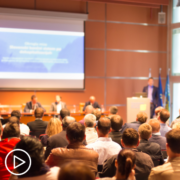
|

|
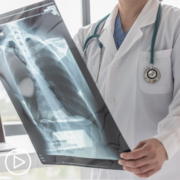
|
Transcript:
Katherine:
Researchers came together earlier this summer at the annual ASCO meeting. Were there highlights from the meeting that lung cancer patients should know about?
Dr. Patil:
Right. So, the ASCO ’22 meeting this year had some really interesting publications. So, for me, the key publications that I thought were kind of interesting from ASCO ’22, 2022, one was a publication looking at the role of immunotherapy in patients who are – have a very high PD-L1 expression, so greater than 50 percent. And there’s –
Katherine:
Reminds us what PDL is.
Dr. Patil:
Oh, yes, of course. So, PD-L1 is a biomarker. It’s a predictive biomarker that lets us know whether some patients will benefit from immunotherapy. It’s also prognostic because if patients have a high PD-L1 score, they tend to do better with immunotherapy than patients who have a low PD-L1 score.
Katherine:
Okay.
Dr. Patil:
Now the interesting data that was presented was a pooled analysis of all the immunotherapy trials to date. And there’s been this ongoing question in lung cancer as to whether patients should get chemo with immunotherapy or whether they should just get immune therapy alone.
And this study showed that if you have a very high PD-L1 score, it is potentially possible to just use immune therapy and forgo chemotherapy. And I thought that was a very interesting analysis.
There’s also several other papers that came out as well. Mostly there was a lot of interest in something called circulating tumor DNA. So, let me just take a step back. This is a type of molecule that can be detected in the blood that can help determine whether cancer is present in your blood or not. And there was a lot of publications at ASCO looking at using a concept called minimal residual disease.
So, when we treat patients with early-stage lung cancer, a big question is how do we know they’re cured or not cured? And a lot of abstracts and publications this ASCO were looking at this concept of minimal residual disease. So, if I can detect some cancer in your blood after you’ve had cured curative therapies, we’re – we have a problem because there’s still cancer around and we’re detecting it in the blood.
And I think this type of approach is going to really inform how we think about early-stage lung cancer management in the future.
Lung Cancer Research Highlights From ASCO 2022
Lung Cancer Research Highlights From ASCO 2022 from Patient Empowerment Network on Vimeo.
Lung cancer specialist Dr. Estelamari Rodriguez shares research updates from the 2022 American Society of Clinical Oncology (ASCO) annual meeting, including the latest advances in immunotherapy and inhibitor therapy.
Dr. Estelamari Rodriguez is Associate Director of Community Outreach – Thoracic Oncology at the Sylvester Comprehensive Cancer Center, University of Miami Health System. Learn more about Dr. Rodriguez, here.
See More From Lung Cancer Clinical Trials 201
Related Resources:
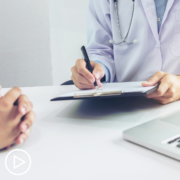
|

|
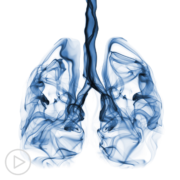
|
Transcript:
Katherine Banwell:
Cancer researchers recently came together at the annual ASCO meeting. Were there any highlights at the meeting that you think lung cancer patients should know about?
Dr. Estelamari Rodriguez:
So, sometimes we look at the conference, and we look at the plenary sessions. And if we don’t see a lung cancer abstract centered at the big plenary session, we feel that nothing happened, but a lot happened. We are learning that all the advances in terms of immunotherapy and targeted therapies can be used earlier and earlier for patients. So, we had data on the NADIM trial, which is a trial out of Spain where they use neoadjuvant, chemo immunotherapy.
We already have that approved in the United States with nivolumab (Opdivo), and they use also nivolumab with a different combination chemotherapy. What was really amazing is that you can replicate this data that is used in immunotherapy before surgery, patients can have very dramatic pathologic complete responses. Which means that at the time of surgery, we don’t find cancer, and that portends a better prognosis. And obviously, we’re trying to do our best for patients. So, that was really, I think, confirms the data that we have seen that immunotherapy can be used earlier.
We also saw updates of trials that had been ongoing looking at the use of immunotherapy in difficult settings. So, there was a trial also out of Spain called the ATEZO-BRAIN trial where they look at the use of immunotherapy Atezolizumab for patients that have brain disease and diagnosis of metastatic disease.
And for a long time, we thought that immunotherapy responses really wouldn’t work in the brain, and we saw that in this trial they were able to control disease in the brain, delay the use of radiation for these patients, and improve their quality of life. So, I think that was, again, a strong message that immunotherapy is here to stay, we can use it in your patients. Then, the third section of trials that were very telling were updates of new drugs for targeted therapy. So, we know today that we have about nine actionable mutations in lung cancer.
So, that is very important that we understand that when a patient gets diagnosed, do they have an actionable mutation, a genetic change that we can target? And that is really the promise of precision medicine, so they present the data for a new drug for KRAS G12C mutation, positive patients call it aggressive. And we already have a drug that was approved about a year ago called sotorasib.
And these drugs are used on patients that previously we knew will do very poorly with chemotherapy and immunotherapy because this KRAS G12C mutation is actually a very common mutation in lung cancer, more common than the other mutations that we have approved targeted therapies in the past, and it’s been difficult to treat.
So now, we have another drug that shows a very good response rate after patients have failed chemo and immunotherapy. It’s still not as a dramatic response as we have seen on the third generation EGFR, ALK and ROS inhibitors, but still a really good promise for patients that didn’t have an option.
So, that was good, they also updated more data on some of the third-generation drugs for ALK. So, we have seen in a prior conference called ACR the drug lorlatinib (Lorbrena), which a third-generation ALK inhibitor, has showed already improvements for patients that have failed prior therapies.
But now they’re showing that for patients in the frontline setting when they first diagnose, receiving a third generation ALK inhibitor can improve brain responses. So, they saw a very dramatic has a ratio of .8, so basically over 80 percent of the brain disease was controlled, and in some complete responses were seen.
And then, patients had a median survival that was over the three-year mark, which had been seen with the prior ALK inhibitors. So, I think it just goes to show that the progress in targeted therapies for lung cancers is exponential, that once we understand the genetic pathways, and we can develop better drugs.
For example, this lorlatinib drug was actually developed in a way that it will stay in the brain longer, because we know that that’s an area where patients have failed. So, really understanding where the prior drugs have failed, where this resistance has been happened, allows us to develop better drugs for patients. So, I think it’s definitely very hopeful conference. I think the best part of the conference was people coming together, because I think that’s when investigators have the opportunity to collaborate and think of new ideas.
So, I think that we don’t take it for granted that we were able to have an in-person conference, which hadn’t happened in two years. We had patient advocates that joined as well, so that’s also very important that the patient advocates are part of the research program, and ideas, and presentations.
Expert Perspective: Exciting Advances in Lung Cancer Treatment and Research
Expert Perspective: Exciting Advances in Lung Cancer Treatment and Research from Patient Empowerment Network on Vimeo.
What are the latest advances in lung cancer treatment and research? Dr. Isabel Preeshagul shares information about new treatment approvals, an update on targeted therapies, and new clinical trial approaches.
Dr. Isabel Preeshagul is a thoracic medical oncologist at Memorial Sloan Kettering Cancer Center. Learn more about Dr. Preeshagul here.
See More From Engage Lung Cancer
Related Resources:

|
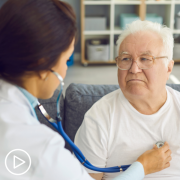
|
Transcript:
Katherine Banwell:
Dr. Preeshagul, when it comes to lung cancer research and emerging treatment options, what specifically are you excited about?
Dr. Preeshagul:
So, honestly, I feel that my interest and excitement are getting pulled in a million different directions as of now. Over the past 16 months, we’ve had 10 approvals in lung cancer, which is unheard of.
Katherine Banwell:
Wow.
Dr. Preeshagul:
It’s been a very, very, very busy time for us as thoracic oncologists, which is really exciting.
I feel that we’ve really come to the forefront of cancer research, which is outstanding. In terms of what makes me excited, right now, I think it’s probably two things. There have been genetic alterations, somatic, that have really been almost like the orphan child in lung cancer. And we have unfortunately had to tell patients, “Listen, you have this KRAS G12C alteration. We know that it portents a poor prognosis. We know it’s more aggressive, but we don’t have anything for you that can target that.”
And as of recently, within the past two months, we had this approval for a drug called sotorasib (Lumakras). This is based on the AMG 510 study. And it is a targeted therapy for patients with KRAS G12C, and the responses have been excellent.
So, finally, we have something. So, it makes me feel good that when I have a patient that unfortunately has this alteration, I no longer have to give them the same song and dance, that I can talk about sotorasib and talk about it with confidence and talk to them about the data. And the same thing is true for patients with an EGFR exon 20 alteration with amivantamab that just got approved. So, it is now, I feel, that research is now unveiling these orphan alterations that we are now having targeted therapies for.
So, that makes me excited. Also, something else that’s making me excited is the fact that we’re realizing and learning to anticipate these resistance alterations. So, we know if you have an EGFR mutation for say, we know now that, unfortunately, at some point, the treatments that we’re going to give you, this targeted therapy, this pill called osimertinib (Tagrisso) in the frontline setting, for some patients, unfortunately, at some point, it’s not going to work for you anymore.
And this is because the cancer gets smart. It develops these resistance alterations. It knows how to usurp the osimertinib, and resist it, and make an alternate pathway, or change its form, turn into small cell, or come up with another alteration that makes the osimertinib not work.
So, we’re realizing to look for these alterations earlier, faster than when a patient starts progressing, and anticipating them. So, our trials are now being designed in a way with combination therapy to figure out a way to outsmart this cancer. We always have to be one step ahead. And unfortunately, cancer is still many steps ahead of us. But we are learning to be smarter.
What Are Solutions to Lung Cancer Care Barriers?
What Are Solutions to Lung Cancer Care Barriers? from Patient Empowerment Network on Vimeo.
What are some solutions to lung cancer care barriers? Experts Dr. Nicole Rochester and Dr. Olugbenga Okusanya share key advice for working to overcome care barriers for optimal care.
See More from Best Lung Cancer Care No Matter Where You Live
Related Resource:

|
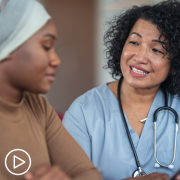
|
Transcript:
Dr. Nicole Rochester:
You’ve gone through a lot of the barriers that patients and their family caregivers may face. Let’s talk about some of the solutions. Are there a few solutions that you can suggest for overcoming some of these barriers that you just described?
Dr. Olugbenga Okusanya:
Yeah, I think from the patient perspective, there are a number of things you can do to really help yourself. Number one is a good healthy dose of research, that means getting online, Googling, finding lung cancer experts, preferably in your region, finding out what their interests are, what are the things that they typically research and take care of, and then finding a way to get in contact with them. I think that is really step number one, it’s finding someone who specializes in the disease, and then to find someone that you actually get along, someone who you have a relationship with, a truly therapeutic relationship and invest in that person, and if they’re the right person for you, whether it be personality fit, whether it be background, you will find a relationship with them that will actually help you get through that process. I would also say many programs actually have nurse navigators who are people that help you navigate this process, that is quite literally why they are part of the health system, so if you can find programs and have nurse navigators, they can really be instrumental in setting up appointments that are either overlapped right after one another, all in the same place, things that really help smooth the edges of getting all the work I’ve done at on time.
And again, I would also recommend the patients, I would try to stack your appointments or stack your visits so that they are not quite so spread out over space and time, because a visit, usually it takes a few days to get a result, which then takes a few days to get a course of action, which then can sometimes provoke another test.
So, the more times that things are stacked together and information just to get in big packets, I think really the better for moving through the process.
Dr. Nicole Rochester:
I think what I’m hearing in your answers is really the importance of patients putting themselves in the driver’s seat, which is another thing that I strongly advocate for. I think many patients and family members don’t see that as their role, and they don’t understand and appreciate the value of doing these things that you just talked about, doing your own research and finding providers with whom you connect, it’s so incredibly important, especially when it comes to cancer and other serious diseases.
How Can I Get the Best Lung Cancer Care No Matter Where I Live?
How Can I Get the Best Lung Cancer Care No Matter Where I Live? from Patient Empowerment Network on Vimeo.
How can those living with lung cancer ensure they get quality care even if they live in rural areas? How can lung cancer patients gain confidence in voicing treatment concerns and in communicating with their healthcare team? Watch as Dr. Olugbenga Okusanya shares key points about such vital topics for the lung cancer community.
See More from Best Lung Cancer Care No Matter Where You Live
Related Resource:

|

|
Transcript:
Dr. Nicole Rochester:
Hello and welcome. I’m Dr. Nicole Rochester, your host for today’s Patient Empowerment Network program. Today we’re going to be talking about how long cancer patients can truly get the best care no matter where you and your family live. We’re going to talk about things like how can I remove roadblocks in my care to gain access to state-of-the-art treatment? Will my insurance limit me if I want to get a second opinion? As a care partner, how do I best advocate for my partner, and is a clinical trial right for me? The answers to some of these questions we’ve received revolve around awareness, feeling empowered to ask questions, and connecting to the right resources at the right time. In this program we’ll be learning just that as we meet our guest expert. It is my honor and privilege to be joined by Dr. Olugbenga Okusanya, he is an assistant professor of Thoracic Surgery at Thomas Jefferson University Hospital. Thank you so much for joining us, Dr. Okusanya.
Dr. Olugbenga Okusanya:
Absolutely. It’s a pleasure to be here, thank you for having me.
Dr. Nicole Rochester:
Now we’re gonna start with talking about some of the barriers to lung cancer care. We know that there are many factors that can negatively impact outcomes for patients and families facing a lung cancer diagnosis, including things like social stigma for smoking, geographic location, socioeconomic status, insurance and access to care, financial hardships, and access to transportation. So, my first question to you, Dr. Okusanya is, what are some of the barriers that both lung cancer patients and their care partners face when they are seeking care?
Dr. Olugbenga Okusanya:
First of all, thank you very much for putting a spotlight on lung cancer care, we really need more people to help us treat this really terrible disease.
There are a number of barriers for our patients in order to get the best care possible. Number one, we actually find at diagnosis, we find that a lot of patients have lung nodules that have been seen because maybe they got a chest x-ray or a CAT scan for some other reason, and maybe they don’t get followed up on because they don’t have a steady source of healthcare, they don’t have a PCP or someone who regularly follows up on their health information. We have trouble also sometimes getting patients in the appropriate diagnostic studies that they need, oftentimes, we find patients that may show up in the hospital that have a significant problem and they may need a special kind of CAT scan or a biopsy, and they simply do not have the resources to get to said CAT scan or get to said biopsy, which is critical in making the appropriate diagnosis so we can get them to the right therapy. One of the biggest things that you mentioned is finding a specialist in terms of all aspects of lung cancer care, whether it is surgery, medical oncology, or radiation oncology, there are medical practitioners that mostly specialize in lung cancer care, and because of that, they’re gonna have access to different resources, they’re gonna think differently about the disease process and they’re gonna approach each patient differently because of the disease process So finding someone who really thinks and works in the lung cancer space all the time, I think it’s a barrier to patients getting really good care.
We also find that one, cancer care has a lot of hurdles, apart from proper CAT scans, biopsies, work-ups, actual interventions, there are a lot of steps that patients have to go, to get from even just getting a diagnosis to getting treatment and having patients move through that period of time, which is we hope usually four to six weeks in a sort of step-by-step manner can be extremely eliminating. So we really are trying to condense those things so patients can meet all the specialists, they need to get all the tests that they need to get in maybe one or two concise visits and then get into care, and lastly, as you mentioned, not having access to what we call multidisciplinary conferences is a limitation because there are more and more nuanced ways that lung cancer is presenting and being treated, that needs to be discussed between a surgeon and radiation oncologists and the medical oncologists, preferably all in the same setting, all at the same time. So having access to those clinics where we can have a really high-level discussion about the best thing to do for a patient, I feel is a significant barrier, especially for our patients with advanced disease.
Dr. Nicole Rochester:
Thank you so much. Wow, you have given us so much to think about and I appreciate your thorough answer. One of the things that I’m struck with as you talk about all of these steps and the fact that ideally, they need to be undergone within a certain time period, of course, it’s time-sensitive. And you mentioned navigating, and certainly, that’s something that I deal with on a regular basis, just the challenges of navigating through each one of those steps can be extremely difficult, you’ve gone through a lot of the barriers that patients and their family caregivers may face. Let’s talk about some of the solutions. Are there a few solutions that you can suggest for overcoming some of these barriers that you just described?
Dr. Olugbenga Okusanya:
Yeah, I think from the patient’s perspective, there are a number of things you can do to really help yourself. Number one is a good healthy dose of research, that means getting online, Googling, finding lung cancer experts, preferably in your region, finding out what their interests are, what are the things that they typically research and take care of, and then finding a way to get in contact with them. I think that is really step number one, it’s finding someone who specializes in the disease, and then to find someone that you actually get along, someone who you have a relationship with, a truly therapeutic relationship and invest in that person, and if they’re the right person for you, whether it be personality fit, whether it be background, you will find a relationship with them that will actually help you get through that process. I would also say many programs actually have nurse navigators who are people that help you navigate this process, that is quite literally why they are part of the health system, so if you can find programs and have nurse navigators, they can really be instrumental in setting up appointments that are either overlapped right after one another, all in the same place, things that really help smooth the edges of getting all the work I’ve done at on time.
And again, I would also recommend the patients, I would try to stack your appointments or stack your visits so that they are not quite so spread out over space and time, because a visit, usually it takes a few days to get a result, which then takes a few days to get a course of action, which then can sometimes provoke another test.
So, the more times than things are stacked together and information just a get to get in big packets, I think really the better for moving through the process.
Dr. Nicole Rochester:
I appreciate that. I think what I’m hearing in your answers is really the importance of patients putting themselves in the driver’s seat, which is another thing that I strongly advocate for. I think many patients and family members don’t see that as their role, and they don’t understand and appreciate the value of doing these things that you just talked about, doing your own research and finding providers with whom you connect it’s so incredibly important, especially when it comes to cancer and other serious diseases. So, I want to switch gears a little bit and talk about racial and health disparities, ethnic and health disparities, specifically in lung cancer care. I know that you have done some research in this area, and certainly being a person of color, this is something that I would imagine you relate to, so we know that the CDC and many other healthcare organizations have now declared racism a public health crisis, and certainly in 2021, we continue to see worse outcomes for cancer and many other chronic illnesses in people of color, so I’m curious, what do you think are the notable health disparities that are consistently seen in treating BIPOC patients living with lung cancer?
Dr. Olugbenga Okusanya:
Yeah, unfortunately, this is an area of interest of mine. And it turns out that the disparities are literally every single stage. There’s not an aspect of lung cancer care, which there is not a significant disparity that hinders the ability of minority patients to get better care, period at all stages. So overall survival for lung cancer for black patient is worse than white patients, even though black patients get diagnosed on average two to three years younger than their white counterparts. Black patients are less likely to get surgical therapy for early-stage disease, which is the actual care for an early-stage disease dates than black patients, than white patients, that gap has been narrowing over the last 20 years, but it is by no means closed. Black patients are unfortunately less likely to get an appropriate work-up to get the indicated tests. They are also less likely to get the chemotherapy when it is indicated, and they are less likely to be enrolled in clinical trials. So, literally at every step there is a significant inequity that affects black patients, and I think it’s really disheartening to see in a field where lung cancer is the most common killer and cancer, and frankly, there are lots and lots of patients who have options, who have good options that never get investigated and never get delivered.
Dr. Nicole Rochester:
That is extremely heartbreaking, and it’s sad to hear that we see the same disparities in lung cancer that we see with every other chronic condition, with every other cancer, certainly what we’ve seen recently with COVID-19 as well, and it really underscores what you said previously, which is the importance of being an advocate for yourself and doing your research and making sure that you really are getting the best care, which could be difficult when you’re struggling with your cancer diagnosis. Sometimes I get angry, I feel like we’re putting so much responsibility and so much burden on the patient. With that said, what are some things that patients of color can do in order to protect themselves from these inequities that you’ve talked about, starting with diagnosis and treatment, what can we do? What can patients of color do?
Dr. Olugbenga Okusanya:
So, I think the number one thing is to ask questions, the number one thing is to say, what are my options? What am I dealing with? What should I do or what shouldn’t I do? And to really make sure you get the most at that time when you see a physician, because that is really what we’re there for apart from the surgery, I’m really there to be an educator. I teach as much as I operate on a daily basis whether it be the medical training is whether in my patients, my job is to communicate information back and forth, so you really want to spend the time asking questions and getting as much information out, as much as you can. Number two is, see a specialist. There’s also very good data to indicate that as a black patient, if you see a board-certified thoracic surgeon, you are more likely to get lung cancer surgery than if you were to see a surgeon of unknown specialization, a general surgeon. So clearly the training gives specialist the ability to make finer determinations and discernments that I think in large part favor black and minority patients, so you wanna find someone who deals with these disease processes all the time because they’re gonna look at it in a much higher level and look at it with a lot more granularity.
Dr. Nicole Rochester:
Just have to repeat what you said, you said, I teach as much as I operate. That just really resonated with me, and I think that… That’s so incredibly important. Doctor means teacher, right? I think that’s the Latin… We are obligated to teach our patients, so I just really appreciate that that’s something that you incorporate in your daily practice. If we shift gears a little bit and talk about access and some of the concerns about treatment access for lung cancer patients, which you’ve actually alluded to, we know that sometimes these barriers that patients face actually limit their access to treatments, and you indicated surgery as being the mainstay and some difficulties with that, so how can we empower patients so that they don’t feel limited in their care, and how do we make them aware of these treatment options that are available, so that if they are in an office and maybe something’s being offered, but that’s not actually, the standard of care, how do we empower them to get that information and then to act on it?
Dr. Olugbenga Okusanya:
Yeah, so number one, which is something I think people do and they don’t realize how valuable it is, bring a friend to the appointment, don’t come by yourself, because you are in an incredibly vulnerable position, you’ve learned or are learning something incredibly emotionally charged and usually very scary. So, you want to bring someone who obviously is gonna love you and care about you, but has enough emotional distance from it that they can be your advocate, they can ask those questions in the room that you may just not be there mentally to ask. Number two, never be afraid to get a second opinion, if you’re lucky enough to live in a populous area with multiple health systems, get a copy of your chart, get a copy of your data, get your disc, make an appointment to see another specialist in another health system and see what they say. Because at the very least, if the information is concordant, then you’re gonna feel pretty good about saying, okay, then I should just go where I think I feel best or who I have the best sort of relationship with. And again, if you are not lucky enough to have that opportunity, I would be very aggressive about seeing if telehealth is an option to reach out to someone who is a specialist, I’ve had not happened to me in the past, I remember I had a woman who telehealth, me from Ohio, because she’d actually read one of my papers about lung cancer, and she sent her scans, uploaded them, I looked at them and I gave her my opinion, and this is the new age or medicine.
This is where we’re at now. This is a viable option, and even if telehealth isn’t an option, you can always just get on the phone. As a lung cancer specialist, a lot of the information I need can be garnered from test scans and images, so frankly, the physical exam has some role, but is not the mainstay of how a lot of the decisions are made. So even if I see your scans and I talk to you, I can give you an opinion over the phone, it takes me 15-20 minutes, and a lot of times, those visits may not even be charged, depending on who you actually ask to give you an opinion.
Dr. Nicole Rochester:
Wow. Free of charge. Okay, I see you’re teaching me something that I didn’t know. I’m a huge proponent of second opinions, I’ve talked to so many patients and family caregivers who think that they’re offending their doctor if they ask for a second opinion, so I appreciate that you brought that to the forefront and you deserve to have multiple opinions as you’re making these very important life-changing decisions. So, thank you for sharing that. This is a perfect segue. You mentioned telehealth, and we know that one of the barriers to receiving care, and you’ve indicated that in terms of having access to a multi-disciplinary team, having access to thoracic surgeons as opposed to general surgeons, so we know that that is impacted by where we live, and that often our geographic location can actually be a barrier to the receipt of quality care, so I’d love for you to just talk a little bit about how patients who may be in more remote locations can make sure that they are also receiving appropriate care for their lung cancer.
Dr. Olugbenga Okusanya:
Yeah, I think this is a very substantive challenge, I think this is one of the holes in healthcare, there’s these regions in the country where you just are not gonna have access to any number of surgical sub-specialist or radiation oncologist, or lung cancer specific oncologists. I think that is a really big challenge. I think we have actually learned through the pandemic that these physical barriers really are not the reason to not get the best care, so I think those patients should be exquisitely interested in telehealth and in phone calls, and I think most healthcare systems now, because the reimbursements have been approved for telehealth and actually now built infrastructure to support it as an ongoing concept. So now, if you are a patient that’s in Arizona and you want to talk to a doctor who’s in New Jersey, you can do that, you can make that happen. If you find someone, you Google them, you find a friend in that area who know someone, you can call their office and say, I want to have a telehealth visit, and as long as you have broadband internet and a phone, you can do it. You can have that conversation.
So, I would advocate for people to really make sure that you at least feel like people in the sort of local regional area that you can perhaps get to maybe two, three hours away, but you can imagine a scenario where you can get there, you can try and establish some level of care and some level of rapport with them. I think that’s something that has really opened, has been one of the few good things to come out of the pandemic.
Dr. Nicole Rochester:
I was gonna say the exact same thing. That is one… There haven’t been a lot of positive things, but that certainly is one of the positive outcomes of the pandemic, is this surge, and it’s not that we already had the capability, but it certainly was not being used to its maximum capacity. I appreciate that. So, speaking of telemedicine and COVID, think one of the challenges that patients and often care partners have is understanding when is a telemedicine or telehealth visit appropriate versus when do you actually need to go see that doctor in person, so… Can you help clarify that?
Dr. Olugbenga Okusanya:
Yeah, so I think in general, even if you start with the telehealth is, I think there’s very little downside to telehealth for almost anyone in general, because a lot of the information can be garnered from the patient record, from their scans. I think in general; it gives you 85% of what you need out of that interaction, and it may be more convenient for the patient, a lot of times it’s actually more convenient for the doctors, doctors have now found ways to work from home. They do have to have their clinic from home, it’s a much more relaxed environment than more efficient. I think there are times like for instance, I have to make decisions about offering surgery to patients who I consider to be moderate or high risk, I think there is a benefit and having that patient come and see me in the office because they have to somehow pass what we call the eyeball test, and that is a little bit of where this disparity comes in in lung cancer surgery, because it depends on who’s eyeball is looking at you, making your determination about what they think is gonna happen with you in surgery.
I remember… Actually, one of my favorite patients ever. She had data that did not look like she would tolerate surgery, everything about her data did not look favorable. And I saw her, I remember seeing her in person, and you could see the spark in her eye and energy that she had, and I said, you know what, we’re gonna do it. And she did great, she did phenomenally well. And that is a case where if you’re in the population of patients that may be slightly more moderate, slightly more high risk, and you need someone to really look you in the eye and you say, I’m going to do what it takes to get through this. I think that’s the patient where the in-touch, in-person visit really is that extra touch that can be benefited.
Dr. Nicole Rochester:
Wow, I love what you said about the spark in her eye and also how you connected that to health disparities, and I don’t know the race or ethnicity of the patient that you’re describing, but we certainly know that that makes a difference, and I just wonder if that had been a different physician, would they have seen that same spark? And I think it just goes back to what we were talking about earlier, and the importance of finding a physician or health care provider with whom you connect, someone that actually respects you, someone that listens to you and see you as a whole person. So, the fact that you were willing to go beyond that data on her chart, which screamed, this is a poor surgical candidate, met her in person, and something about her let you know that she was gonna be okay.
Dr. Olugbenga Okusanya:
Agree. And that’s why in medicine and surgery is still art at the end of the day, it’s still an art. You make decisions, best informed decisions, but there’s a lot of it that is still really special and mystical in a way, and I think having that in-person interactions will let you practice that and it’s exactly what you said, you want to have a really nice relationship with the physician, especially anyone that’s gonna be doing anything that might be invasive or dangerous because for the most part, you meet someone for 45 minutes and then you sign up for what could be a life-threatening event. So, you, the physician and the patient should feel really good about that interaction and whatever that energy is, it’s really important, it’s a little bit kind of sacred, I think, and I think it’s really valuable to invest in that if you don’t like the surgeon, you really don’t feel like it’s a good fit or you don’t like your oncologist, find someone else. You’ll do better in the long run, for sure.
Dr. Nicole Rochester:
That is so incredibly important. I agree, 100%. So much of healing is beyond just the nuts and bolts of the medical care that we provide, or in your case, the surgical care, there’s so much more to that, that’s not really well studied, but that relationship and that connection is key.
Dr. Olugbenga Okusanya:
Critical, and that’s not to say that necessarily the person has to be like the warmest, friendlies, the most fun person you ever met, some people prefer a more yes ma’am, no ma’am, clear cut, well-defined boundaries of a relationship. Some people prefer a big hug and a laugh and a joke, so if you’re getting what you need, that’s exactly what you need, and if you’re not getting what you need, you should think about your other options.
Dr. Nicole Rochester:
Love it, love it. Alright, Dr. Okusanya, so we’re gonna talk now about staying on that theme of empowering patients, we know that all of these barriers that we’ve been discussing can impact and limit treatment options, and we know that late diagnoses or not getting the proper care at the outset will lead to more complications and unfortunately, even death in some situations, and as you’ve alluded to, we know that patients who are educated about their illness, patients who take an active role in their medical care receive better care, they have better outcomes. So, what are some key questions that patients and care partners should ask at the very beginning when they are first beginning this journey with lung cancer?
Dr. Olugbenga Okusanya:
So, I would say… Question number one that I would ask is like, do you specialize in this? Is something that you do on the regular basis? What percentage of your practice is lung cancer care? You would really like an answer that’s more than 50%, you would like someone who sees lung cancer patients and take care of lung cancer patients as a matter of routine. And something I would also say as a patient, you kind of want your care to be routine, you don’t wanna be someone where things are just being figured out for the first time, you really wanna have someone who does this all the time. The other questions I would ask are, can you tell me what all the options are, not just the one you’re offering to me, I really wanna know what all the options are, and I always tell patients the options are really very broad. A physician chose the option is one, you may wanna not do anything that is an option, you know saying We know it’s there; we understand and we’re gonna watch it or not do anything is a very reasonable option they should tell you about biopsies or surgery or non-invasive therapeutic modalities.
You really wanna say, I want you to give me the laundry list, all the things that are possible in the institution that I’m sitting in. And then I would also ask, what are the things that you are not considering before that might be options. What are the things that maybe you’ve ruled out in your mind and can you tell me more about that? Because we’re very physician, they’re very good at heuristics, really good at skipping steps and making next logical jobs, so it’s good to ask one of those steps that you skipped in your life and why did you skip them? And then the last thing I would ask is, Is this the kind of case that should be discussed in a multi-disciplinary clinic or conference? Is there anybody else I should talk to about this problem? And I think if you can ask those questions and feel very confident about asking those questions again, most practitioners who are high level and specializing, this will not be offended, they will be glad that you’re asking the question, it will be a relief for both of you. I think if you can ask those questions, you can really help to eliminate some of those ascites and really get on the right trajectory from the beginning.
Dr. Nicole Rochester:
Those are such important questions, starting with the first one you provided, which is… Do you specialize in this? I think that we spend a lot of time sometimes betting, other professionals, even hair stylists, or if we wanna get our car fixed, we wanna go to the person that specializes and whatever is wrong with that particular problem, but we don’t always take such care with our most precious commodity, our body. So, I think that’s so incredibly important that we ask that question, and it’s not to make bad comments about those who don’t, but people like yourself have trained for many years, and there’s something to be said about that when this is your area of focus, and this is what you do day in, day out. So, I love that, I also really love what you said about kind of getting inside of the brain of the doctor, because you’re right, we’re skipping steps and we’re going through algorithms, but we don’t often bring the patient into that process, and so I really love the idea of the patients questioning, are there things that you didn’t consider and why? And really having a full understanding of all of those treatment options, and maybe if the doctor has erroneously ruled out one of those possibilities based on maybe an assumption that gives the patient an opportunity to clarify that.
That is very powerful.
Dr. Olugbenga Okusanya:
And I would say, as a patient, oftentimes, we wanna describe very positive feelings towards your physician, it’s a notch a very natural thing to do because you want them to be good, so that eventually you’ll be good and they’ll take good care of you. You wanna ascribe those positive thoughts, and I think that’s very reasonable, but we should approach that with a little bit of question because this is someone who has a lot of information and a lot of knowledge, and you wanna make sure you are getting everything in the middle, so it doesn’t get lost in translation. You wanna make sure you’re there for that conversation.
Dr. Nicole Rochester:
Absolutely. What advice do you give to patients that you see so that they can feel empowered Dr. Okusanya? Is there any specific advice that you give when you see patients and things that just helped them to take this active role that you’ve been describing?
Dr. Olugbenga Okusanya:
Number one, I tell patients to bring someone with them to their appointments, someone who can stand by as within reason someone who can be there to listen as well, ’cause usually I say, if I tell you 100 things in an appointment which can legitimately have, I could give you 100 unique points of information and in 1 45-minute visit. If you catch 30 of them or 35 of them, you really understand that. I think that’s a lot because they’re very emotionally charged. So, hopefully someone else, it’s with you, maybe catches another 30 or 40, and that gets you to a point where you can really sit down later and understand. I encourage patients to take notes to write things down, and if they want to, to record, to have audio recording of the session, I wouldn’t say anything to you now that I wouldn’t say in a month or in a year, or anywhere else. I’m gonna tell you exactly what I think and I… And if I have uncertainty, I will expose that uncertainty, I will let you know that this is a case that could go either way. And this is a piece of information that I’m looking back and forward between these two options and that really helps the patients later on go back and say, Did I really hear that right? Did I really understand it, right? So that you can feel like you’re getting the best care, and I really think that you have to make sure that you feel comfortable with the provider.
I think that’s just the number one thing. Are you happy with them? Do you like the way they comported themselves? Did you like the way they spoke to you? Did you like their staff? Also remember, you’re likely gonna be interacting with their staff as much as you interact with the physician, so the other people in the office, the front desk people, the nurse practitioners, the medical assistants, those are the people that you’re gonna spend a lot of time talking to. Did you have a good rapport with them? Also, all that stuff counts to make sure that you’re getting the best experience possible and that you can really be an advocate for yourself.
Dr. Nicole Rochester:
That is incredible. Well, it’s just about time for us to wrap up, I just wanna reiterate, you share so many pearls today, but I just wanna reiterate a few of them, and they really resonate with me as a former caregiver and as a health advocate, but that’s the importance of asking questions, the importance of bringing a buddy, and I appreciate that, particularly in your field, when we go into a doctor’s office and the word cancer is stated, everything else goes out of the window, and even in less threatening situations, there’s data that shows that… I think about 20% to 25% of what we say as physicians is actually retained, so certainly when you get a bad diagnosis, that number is even lower, so bringing somebody with you who is not necessarily emotionally detached, but they can literally kind of be the note taker, and they may even pick up on some nuances and things that you may have missed as a patient is so incredibly important. I love that you’ve offered the option of recording, I think that’s also another tool that many patients and family members aren’t aware of, and I think there’s an assumption, and it’s true to some degree that doctors don’t wanna be recorded, but knowing that that is an option.
The fact that the care that we receive really is impacted by whether or not the person specializes in lung cancer, a thoracic surgeon, and being empowered to ask that question, is this your specialty? How often do you see patients like me and being empowered to ask those questions that ultimately won’t lead to improve care is just so incredibly important, and I think just everything that you’ve shared that really allows the patients and the caregivers to understand just how important their role is you’re the one that’s going to take out the cancer and you’re the one that’s going to get them better, but there’s so many things that happen before that step, before they are on that operating room table that is so important. Do you have any closing thoughts that you’d like to share with us, Dr. Okusanya?
Dr. Olugbenga Okusanya:
I think for patients and their advocates, I think it’s really important number that you’re putting together a health care team. You’re putting together a group of people like the avengers. You’re putting together a bunch of people to come together to help you deal with this health problem. You are entering into a therapeutic relationship, so that relationship has to be healthy in order for you to have the best possible outcome, you should feel good about, you know, your doctor is gonna be very skilled, became very knowledgeable, and just like we talked about before. You really wanna find someone who has the heart of a teacher, someone who can sit down and explain it to you in a way that’s gonna be digestible and that is gonna be actionable. So I think if patients and advocates remember that you wanna build a really solid, a really healthy relationship with someone who’s gonna help you take care your health, I think if you do that, you’re going to be in excellent care.
Dr. Nicole Rochester:
Awesome. Well, I really enjoyed this time. Thank you so much, Dr. Okusanya, you have given us so much useful information, and I wanna thank all of you again for tuning into the Patient Empowerment Network program.


